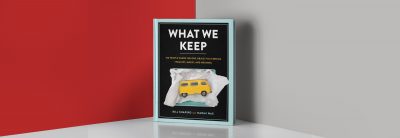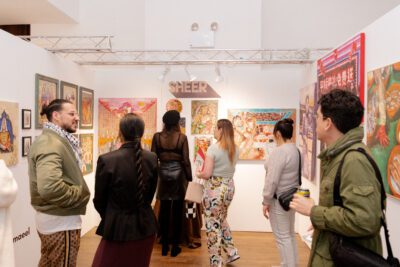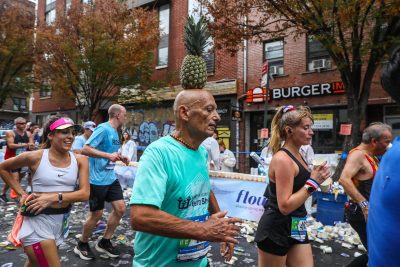Tasteful Nudes: Celebrating the Female Body with Leah Goren
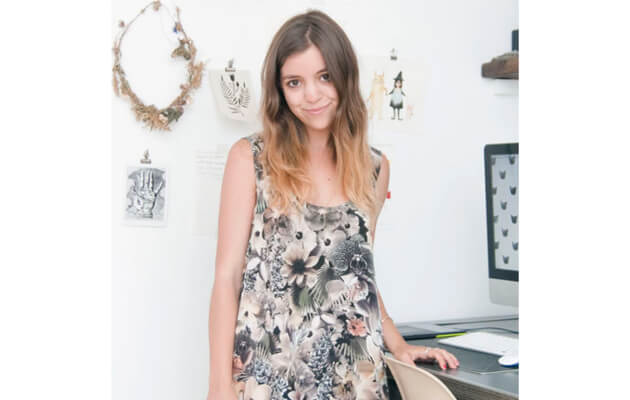
Leah Goren
If you read the New York Times, you’ve probably come across Leah Goren’s name. No, she isn’t the byline of that Styles writer you hate-read or the subject of some think piece about millennials, she’s an illustrator and surface pattern designer whose illustrations have grace the pages of the paper. While she’s perhaps better known for her delicate, gestural cats and floral drawings, Goren gracefully executes her work in a myriad of mediums.
Yeah, sure, another artist in Brooklyn, we know. Everyone here is either a creative or knows one, or slept with one who dubbed themselves the Basquiat reincarnate. It’s like six degrees of Kevin Bacon, except everyone is a creative and you win after making just one connection.
But Goren is different. I actually like her.
Besides being a fellow Brooklyn transplant, I’ve always been drawn to Goren. Her style of depicting the female body serves as almost a reclamation of it, which is a breath of fresh air in a world that often uses and manipulates the female body as nothing more than a shock-device. Goren’s painted ladies mirror those of Matisse, whom Goren cites as an influence; it’s like looking at Matisse’s Dance, but from a thoroughly modern perspective. Her women are often depicted as carefree and unapologetic; people who have stuff to do, like dancing or lounging around, and while she’d probably never admit it, Goren is clearly the kind of boss bitch chick she paints in her work.


Illustration of Goren via Instagram
Here, I talk with Goren about her expansive portfolio, boundless pattern, and why nudes are trending.
What do you do and why?
I’m a freelance illustrator, which means I make commercial art for a variety of clients including Anthropologie, the Land Of Nod, Revlon, Penguin Random House, and the New York Times. My projects range from product work, like ceramic mugs or patterned notebooks, to more traditional illustration like book covers or advertisements. I also run a webshop where I sell artwork, pins, scarves, tote bags, and other items printed with my designs. I’m an illustrator because my work is part of my identity, and also it’s my job and I don’t think I’m qualified for any other work.
You’re originally from San Diego, California, right? What made you trek to a colder climate?
Yes. I grew up in Carlsbad, California, which is a beach town 30 minutes north of San Diego. It was a very conservative, Christian city (at least from my perspective) and being a Jewish girl who lived in a funky beach house with an artist mom made me feel like an outsider. When I was 15 and 16 I spent my summers at the California College of the Arts pre-college program in Oakland, taking classes in drawing, painting, and printmaking. It was life changing. I met a whole group of kids and teachers who valued the things I did, and spent time exploring a really exciting city. So, I knew I wanted to go to art school, and moving far away from home to a big city like New York seemed really appealing.
How did you get into illustration?
I always thought I wanted to study fashion, but after going through Foundation year (the first year at most art schools where you take intensive general classes like color theory, figure drawing, 3D design, etc.) I began to change my mind. I realized I was really good at drawing, and I loved it, and wanted to incorporate that into my major. I also took a fashion drawing class that I hated, and I really didn’t like most of the people going into fashion. I thought I would have to settle for Fine Arts, but then a friend told me about illustration. I really had no idea what it was. It perfectly combined what I loved about fashion and making commercially accessible work with drawing.
Does fashion influence you? If so, how?
Yes, but more in a personal style sense than a runway sense. I don’t really follow fashion, but I always pay close attention to what people around me are wearing, and sometimes I’ll look up street style on Tumblr for image reference. I usually want the figures I draw to look current and stylish.
A majority of your work is a mix between functional art and wearable art. How would you describe the type of art you create?
If you’re referring to the products I sell in my shop then yes, though I really just see them as products or design objects and not “art” unless it’s a screen print or an original painting. Ceramics could fall in the art category, too, depending on how it’s used or displayed. When I’m designing or making my own products, I’m looking for a way to bring my drawings off the page and make them usable. The shapes themselves are really simple—a scarf, a tote bag, or a print are all just squares—but the tangibility brings them to life. One reason why I don’t want to call my work art is because I want it to be accessible to everyone – a non-pretentious, everyday object that can still make your life a little more beautiful.
You also play with patterns and repetition a lot in your work? Would you say that that’s your signature style?
I am definitely known for it, and a lot of my work involves pattern design. I started making patterns when I was in school because I had a hard time fitting a drawing into a box on a page and making a piece I was satisfied with. Patterns have no bounds; I could arrange any number of elements into a rhythm that felt right and it would repeat forever. I also liked that patterns could be printed onto products with more ease than a traditional illustration, and I always wanted to find a use for my work, especially before companies were hiring me to make things for them.
How has your creative style evolved over the years?
I think my style will always be evolving, and it feels like just this year I started making work I really like. Since I’m young and newly out of school–I graduated in 2012–this is probably the time with the most stylistic change. In school I did a lot of experimenting with materials and tried to figure out what I liked, what I was good at, and what process worked for me. It was then I committed to learning how to draw with a small brush, and I explored various types of ink, watercolor, and digital coloring before starting to use Winsor & Newton gouache almost exclusively.
What’s your favorite thing to illustrate?
I always like to draw fashionable girls and cats, though if I do the same thing too often it gets boring. Recently I’ve been really into drawing elaborate room scenes. The best ones are from my grandma’s house, because she has very old, ornate furniture, a large plant collection, and books, art, and tchotchkes covering every surface.
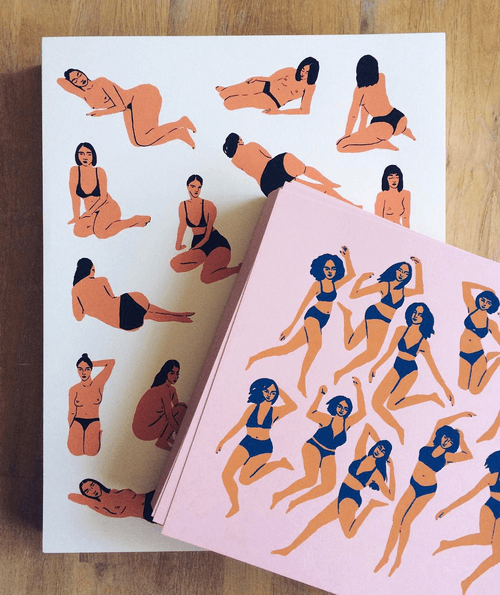

Screen prints of Goren’s painted ladies via Instagram
Women show up a lot in your art. Is there a reason why you never draw men?
I wouldn’t say never, because I do have assignments where it’s necessary—a recent ad for Nest, for instance, of a snowy hill had many men skiing, or a book cover showing a New York street scene needed a few men. But, in terms of what I may post on Instagram or draw in my free time, women are just more interesting to me, probably because I am one. There’s more possibility to draw fashion that I’m into, and the curves on a woman’s body are just more fun to draw.
You mentioned that nudes are having a moment in art and fashion right now, why do you think it is trending?
The Internet has made it possible for so many artists and designers—including myself—to be seen. Anyone can create content, and start or contribute to a trend. Many of us are simply making work about what we know: the experience of living in a female body, or perhaps for men how they relate to women in a positive way. Of course there is art with more overt social or political messages, but a lot of what I see is playful: pillowcases with screen printed boob patterns, ceramics planters or jars with sculpted boobs, incense holders in the shape of nude women. These are design objects for everyday life, because why shouldn’t we celebrate of the female figure all the time?
The Internet has also allowed creators to find and connect with each other. I’ve met so many friends online who I’ve worked on projects with, such as the pop-up shop Sometimes, or Kaye Blegvad’s zine project, Horizontal Press. When these projects are put back online with a bunch of well-known names attached to them, it definitely starts to look like a trend. Kaye has convinced a ton of amazing illustrators to make pornographic zines, so it must be in right now!
And nudity is a theme in some of your pieces. What’s the significance?
I just really love life drawing. I don’t always have the chance to go to sessions with a model, though there are many around New York, so sometimes I’ll do it myself using image reference from Google. In my products, it is kind of the perfect mix of daring and classical, especially when applied to a luxe surface like silk or a porcelain dish.
How do you stay inspired?
I try to just stay excited about what I’m working on, and then I feel motivated to keep making new work. A lot of the projects I do take a very long time to be released into the world—sometimes well over a year—and it’s easy to lose sight of that and feel like I’m not working on anything. But when I finally get to see and share the end result I’m always inspired to keep creating.
What are you currently working on?
My project for the next few months is my first illustrated book. It’s a small book about female friendship, told from the perspective of one friend to the other—the perfect thing to give to your best friend as a gift. It will be published in Fall 2016 by Clarkson Potter.
Goren’s webshop is currently closed until 2016, but you can find her on Tumblr.
You might also like 














